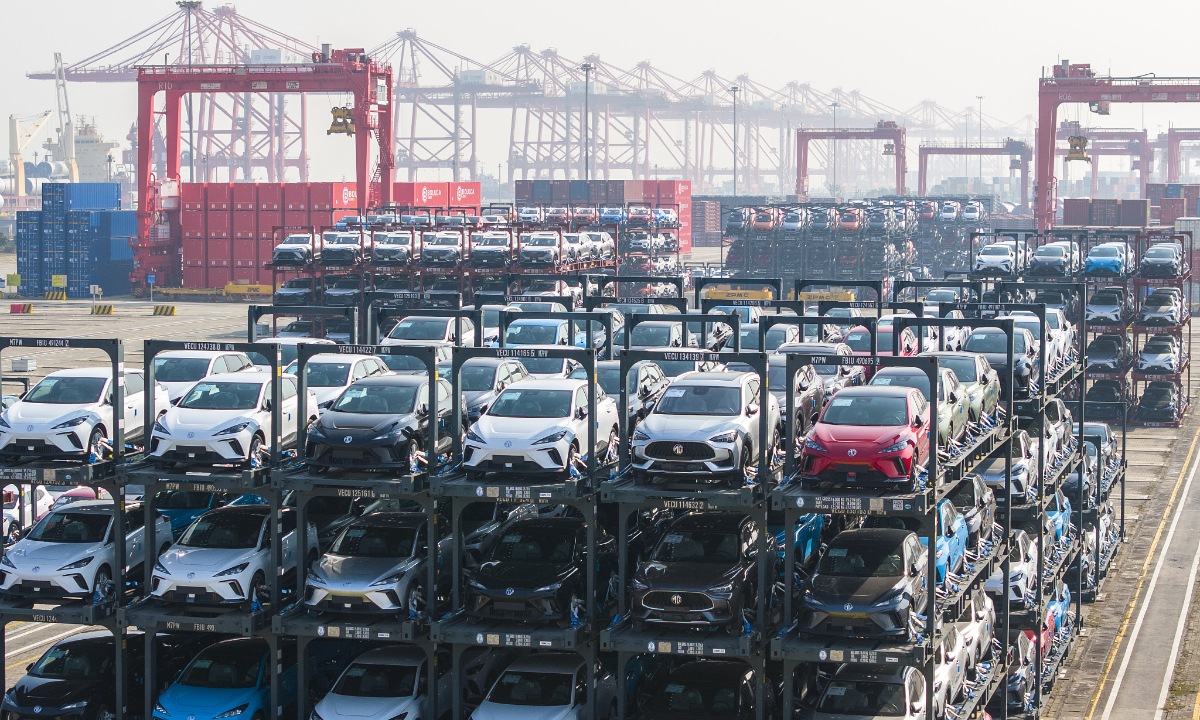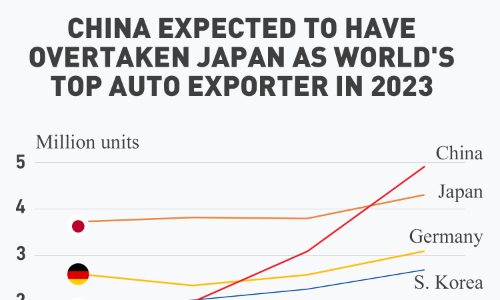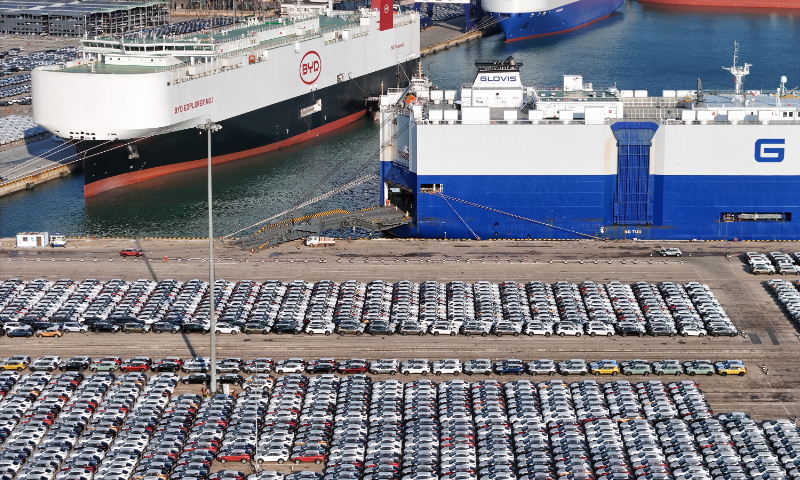
Photo:VCG
Chinese shipyards are busy producing a special type of vessel - known as a ro-ro - to match the nation's newfound strength in the emerging field of vehicle exports, industry insiders told the Global Times.
China's vehicle industry reached several milestones in 2023, with record production and sales, according to industry data released last week, paving the way for the country to potentially become the world's largest car exporter.
Auto exports hit 4.91 million, up a whopping 58 percent year-on-year, data from the China Association of Automobile Manufacturers (CAAM) showed. With such a robust figure, China is expected to have become the world's biggest car exporter last year.
To match the nation's newfound strength in the emerging field of vehicle exports, Chinese shipyards are running at full throttle to keep up with demand from shipping companies as well as auto manufacturers.
Jinling Chuanbo, a domestic shipyard under China Merchants Industry Holdings Co, has an order backlog up to 2027, the People's Daily reported.
Taicang Port in East China's Jiangsu Province is handling 7,000-8,000 vehicles per month, and in December the figure shot up to nearly 30,000, the report said.
The port is investing more than 2 billion yuan ($281 million) to build the largest automobile ro-ro wharf along the Yangtze River, with an annual shipping capacity of 1.3 million units.
Eddie Zhang, operational director of COSCO Shipping Car Carriers, which is a leading car shipping company in China, told the Global Times that his company has ordered 24 ro-ro vessels, which are expected to enter service by the second half of 2024, in light of the bullish outlook for the fast-growing market.
Last December, the construction on a new vessel H1600 began at a domestic shipyard under Shanghai Waigaoqiao Shipbuilding Co, Zhang said. These vessels, each able to carry 7,000-8,600 vehicles, are powered by low-emission liquefied natural gas.
"We expect to have a fleet of roughly 30 ro-ro vessels capable of shipping 700,000 cars abroad annually after all these new ships join our fleet," Zhang said.
Due to a confluence of factors, China's car exports exploded in recent years. In 2022, exports hit about 3.11 million units, compared with 2 million in 2021 and 1 million in 2020.
To cope with the gap between immediate demand and the time needed to build new vessels, which is nearly 15 months, shipyards are tapping digitalization, technological innovation and existing capacity to carry the load.
Nearly 60 percent of the vehicles are currently shipped abroad using a system called open car racking, according to a manager at Taicang Port. The method allows dry bulk cargo ships to carry vehicles.
Last April, the State Council, China's cabinet, in a plan aimed at boosting foreign trade, encouraged auto manufacturers and shipping companies to better connect and cooperate by signing long-term transport contracts.
To expedite car exports, leading Chinese electric carmaker BYD Co has chartered cargo ships, and first such ship has set sail for Europe, according to media reports last week.



